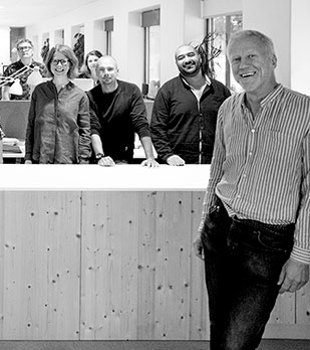The car is sometimes called the unseen community planner. Cars take up space, out on the roads and particularly when standing still. I once heard someone say that 90% of urban planning is about trying to fit in all the parking spaces.
In a housing project too, finding space for the required number of cars is a challenge. It is not uncommon for a garage to be placed under an apartment block – a solution that is expensive to build and maintain, and that not everyone can use.
Switching to sustainable and circular systems is a crucial issue for our age. In this context, there is unexploited potential for current developments to be designed so they support this transition; shaping buildings that then shape us.
So how many parking spaces do we really need? Already, mobility as a service and shared mobility can radically cut the demand for land and investment in parking spaces. From a longer perspective, the trend for the expansion of servicification, digitalisation, a sharing economy, e-commerce and autonomous vehicles is likely to fundamentally redraw the map of how and why we travel in the future. But how can wood be part of this future?
Let me offer a suggestion. The climate issue, along with technical and social developments, will undoubtedly affect future travel, although we don’t yet know how quickly or in what way. We need flexibility in the different scenarios for future cities – i.e. the built environment that we are designing and planning today. Here, prefabricated wooden structures can play a key role in the transition to a more sustainable lifestyle.
If instead of digging out car parks under every block, we build mobility centres that can provide a whole area with both mobility services and car parking spaces for those who still want to own their car, we will create a better foundation for effective and coordinated solutions. In addition, the structure of such buildings has less of a climate impact throughout their life cycle. A modular design with generous ceiling heights can easily be adapted as the transition progresses, whether you want to convert the space for other purposes or preferably dismantle and recycle the structure to make way for other functions.
To support new behaviours and travel habits, we need a new, attractive living environment, where small electric vehicles can become part of the built environment in a different way to their fossil-based cousins. Here, wood stands as the obvious choice – climate smart, easy to work with, flexible and quick to assemble. And, above all, with the potential to irrevocably change the basis of future mobility for the better.





























